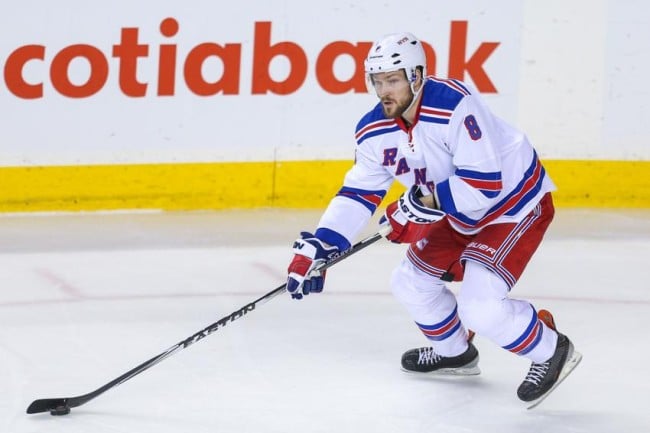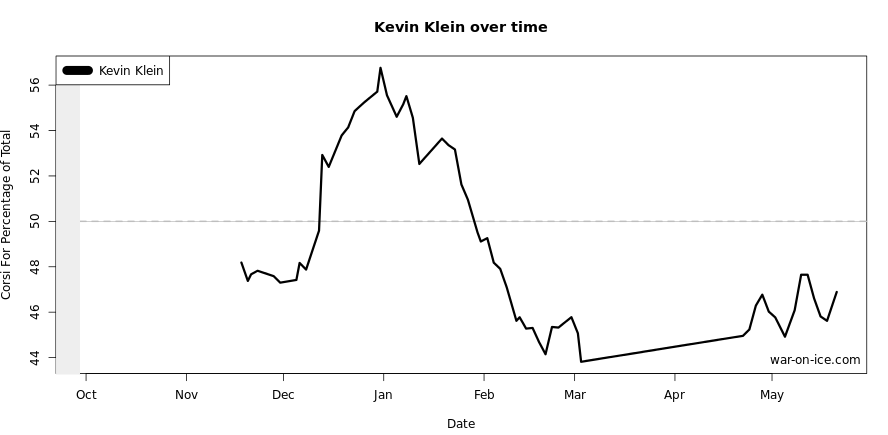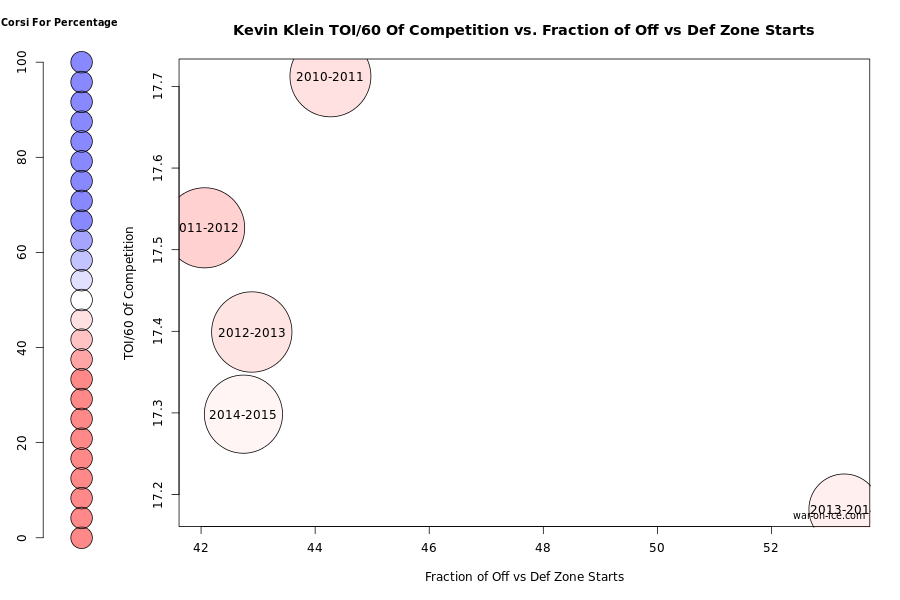It’s no secret that the New York Rangers are in a bit of a cap crunch. They are already deep in conversations to clear $1.45 million by trading Cam Talbot, but even that’s not enough to sign their four key RFAs. The blue line for the Rangers currently costs them $25.925 million, which is relatively absurd. Out of those contracts, the only one that seems remotely moveable is Kevin Klein.
Klein’s contract is actually pretty cap friendly, with three years remaining at a $2.9 million cap hit. What makes him more appealing for budget teams is that after Klein’s $3 million salary this year, it drops to $2.75 million for the last two years of the deal. That makes him even more marketable to budget teams that need to save money every step of the way.
Klein is coming off a career year, where he scored nine goals and added 17 assists for 26 points. He also finished a whopping +24, which for some reason still means something to some GMs. For the first three months of the season, Klein was arguably the Rangers’ best defenseman.
Trading Klein isn’t a new idea. It’s an idea I floated in January, and suffice it to say, the response was negative. How could I even introduce such an idea? Well, the idea was simple: Klein, at that point, was performing way above his career averages.
This isn’t to take away from his amazing start, he was one of the reasons why the Rangers stayed at .500 hockey during that stretch. But regression was coming, and boy did it ever.
From January 1 through the end of the season, Klein scored just twice, but he did add 12 assists, including a run of seven assists in seven games from February 4 through February 16. His shooting percentage plummeted from 21.4% in December to 11.8% for the full year. Even that number is a full six percentage points higher than his career average (5%).
It goes beyond the counting stats though. Part of Klein’s great first half was that he was able to push the puck up the ice as a positive possession player. But as the season progressed, those numbers tanked hard.
Klein went from a 56% possession guy to a 47% possession guy in the span of three months, and that poor play continued through the playoffs. This matches what we saw on the ice, as Klein really struggled once the calendar turned to 2015. It doesn’t help that he already has below average gap control and skating. He’s tough as nails, but that alone doesn’t get it done.
Some might point to his usage, since he does typical get hammered with defensive zone starts.
The usage is on par with what we’ve seen from him over the past few seasons, save for last year when he got over 50% OZ starts. And it’s worth noting that over the course of the full season, Klein’s numbers were better this season than his previous campaigns. But does someone really turn a corner at 30 years old? It makes more sense that his hot start skewed his numbers this year. Again, not a slight against him, just an objective, statistical thought.
The prevailing argument is that the Rangers need a defensive defenseman like Klein. Aside from the fact that the game is evolving and the terms of offensive/defensive defensemen are slowly going the way of the dodo, you assume that a defensive defenseman should, at the very least, limit shots to the outside. This holds especially true if the player isn’t pushing the play up the ice.
When Klein is on the ice, he’s not necessarily doing a good job of limiting chances to low risk areas. The below chart on the right shows the shot attempts, by defensive zone area. Areas in red are high volume shot attempts, areas in blue are low volume shot attempts.
Since Klein is a net negative possession player, it’s not that surprising that we don’t see much blue on the right side of the chart. The alarming part is that the danger area in front of the net is very red, which means he allows more shots from that area on the ice than others.
As an FYI, the left chart represents Klein offensively. Since he’s a net negative possession player, we expect more blue, since he isn’t on the ice for a large number of shot attempts.
Overall, Klein’s numbers from last season are pretty solid. They are well above his career averages. But the underlying trends are not good, and suggest serious regression for Klein next year.
With a salary crunch coming and Brady Skjei on the way, the Rangers might be best served in dealing Klein now. The $2.9 million saved goes a long way to getting under the cap, something the Rangers sorely need.
Share:
More About:Irresponsible Rumormongering




